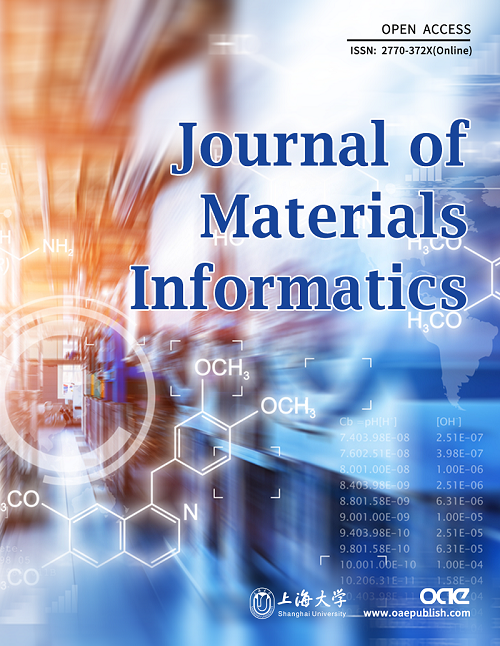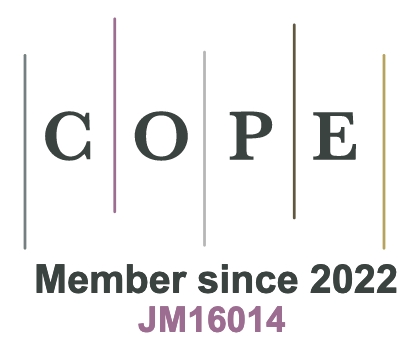REFERENCES
1. NAE Grand Challenges for Engineering. 2017. Available from: http://www.engineeringchallenges.org/. [Last accessed on 31 Aug 2021].
2. Goodfellow I, Bengio Y, Courville A. Deep learning. Cambridge: MIT press; 2016.
3. Tian Y, Peng X, Zhao L, Zhang S, Metaxas DN. Cr-gan: learning complete representations for multi-view generation. Proceedings of the Twenty-Seventh International Joint Conference on Artificial Intelligence; Main track; 2018. p. 942-8.
4. Sanchez-Lengeling B, Aspuru-Guzik A. Inverse molecular design using machine learning: Generative models for matter engineering. Science 2018;361:360-65.
5. Bhowmik A, Castelli IE, Garcia-lastra JM, Jørgensen PB, Winther O, Vegge T. A perspective on inverse design of battery interphases using multi-scale modelling, experiments and generative deep learning. Energy Storage Materials 2019;21:446-56.
6. Chen CT, Gu GX. Generative deep neural networks for inverse materials design using backpropagation and active learning. Adv Sci (Weinh) 2020;7:1902607.
7. Yeung C, Tsai R, Pham B, et al. Global inverse design across multiple photonic structure classes using generative deep learning. Adv Optical Mater 2021; doi: 10.1002/adom.202100548.
8. Dan Y, Zhao Y, Li X, Li S, Hu M, Hu J. Generative adversarial networks (GAN) based efficient sampling of chemical composition space for inverse design of inorganic materials. npj Comput Mater 2020;6:84.
9. Dong Y, Li D, Zhang C, et al. Inverse design of two-dimensional graphene/h-BN hybrids by a regressional and conditional GAN. Carbon 2020;169:9-16.
10. Iyer A, Dey B, Dasgupta A, Chen W, Chakraborty A. A conditional generative model for predicting material microstructures from processing methods. arXiv preprint arXiv:1910.02133 2019.
11. Senkov ON, Miracle DB, Chaput KJ, Couzinie J. Development and exploration of refractory high entropy alloys-A review. J Mater Res 2018;33:3092-128.
12. Philips NR, Carl M, Cunningham NJ. New opportunities in refractory alloys. Metall Mater Trans A 2020;51:3299-310.
13. Melia MA, Whetten SR, Puckett R, et al. High-throughput additive manufacturing and characterization of refractory high entropy alloys. Applied Materials Today 2020;19:100560.
14. Chen J, Zhou X, Wang W, et al. A review on fundamental of high entropy alloys with promising high-temperature properties. J Alloys Compd 2018;760:15-30.
15. Liu Z. Ocean of Data: Integrating first-principles calculations and CALPHAD modeling with machine learning. J Phase Equilib Diffus 2018;39:635-49.
16. Li Q, Chen W, Zhong J, Zhang L, Chen Q, Liu Z. On sluggish diffusion in Fcc Al-Co-Cr-Fe-Ni high-entropy alloys: an experimental and numerical study. Metals 2018;8:16.
17. Wu Y, Si J, Lin D, et al. Phase stability and mechanical properties of AlHfNbTiZr high-entropy alloys. Mater Sci Eng A Struct Mater 2018;724:249-59.
18. Wen C, Zhang Y, Wang C, et al. Machine learning assisted design of high entropy alloys with desired property. Acta Materialia 2019;170:109-17.
19. Krajewski AM, Siegel JW, Xu J, Liu ZK. Extensible structure-informed prediction of formation energy with improved accuracy and usability employing neural networks. arXiv preprint arXiv:2008.13654 2020; doi: 10.2139/ssrn.3721830.
20. Tawfik SA, Isayev O, Spencer MJS, Winkler DA. Predicting thermal properties of crystals using machine learning. Adv Theory Simul 2020;3:1900208.
21. Chibani S, Coudert F. Machine learning approaches for the prediction of materials properties. APL Materials 2020;8:080701.
22. Goodall REA, Lee AA. Predicting materials properties without crystal structure: deep representation learning from stoichiometry. Nat Commun 2020;11:6280.
23. Schleder GR, Padilha ACM, Acosta CM, Costa M, Fazzio A. From DFT to machine learning: recent approaches to materials science-a review. J Phys Mater 2019;2:032001.
24. Schmidt J, Marques MRG, Botti S, Marques MAL. Recent advances and applications of machine learning in solid-state materials science. npj Comput Mater 2019:5.
25. Dai D, Xu T, Wei X, et al. Using machine learning and feature engineering to characterize limited material datasets of high-entropy alloys. Computational Materials Science 2020;175:109618.
26. Kim G, Diao H, Lee C, et al. First-principles and machine learning predictions of elasticity in severely lattice-distorted high-entropy alloys with experimental validation. Acta Materialia 2019;181:124-38.
27. Qu N, Liu Y, Liao M, et al. Ultra-high temperature ceramics melting temperature prediction via machine learning. Ceramics International 2019;45:18551-5.
28. Yu J, Guo S, Chen Y, et al. A two-stage predicting model for γ′ solvus temperature of L12-strengthened Co-base superalloys based on machine learning. Intermetallics 2019;110:106466.
29. Ruan J, Xu W, Yang T, et al. Accelerated design of novel W-free high-strength Co-base superalloys with extremely wide γ/γʹ region by machine learning and CALPHAD methods. Acta Materialia 2020;186:425-33.
30. Jha R, Chakraborti N, Diercks DR, Stebner AP, Ciobanu CV. Combined machine learning and CALPHAD approach for discovering processing-structure relationships in soft magnetic alloys. Computational Materials Science 2018;150:202-11.
31. Nomoto S, Segawa M, Wakameda H. Non-equilibrium phase field model using thermodynamics data estimated by machine learning for additive manufacturing solidification. Solid Freeform Fabrication 2018: Proceedings of the 29th Annual International Solid Freeform Fabrication Symposium - An Additive Manufacturing Conference; Austin, TX, USA. 2020. p. 1875-86.
32. Huang W, Martin P, Zhuang HL. Machine-learning phase prediction of high-entropy alloys. Acta Materialia 2019;169:225-36.
33. Li Y, Guo W. Machine-learning model for predicting phase formations of high-entropy alloys. Phys Rev Materials 2019;3:95005.
34. Kaufmann K, Maryanovsky D, Mellor WM, et al. Discovery of high-entropy ceramics via machine learning. npj Comput Mater 2020;6:42.
35. Flam-Shepherd D, Wu T, Aspuru-Guzik A. Graph deconvolutional generation. eprint arXiv:2002.07087 2020.
36. Kim S, Noh J, Gu GH, Aspuru-Guzik A, Jung Y. Generative adversarial networks for crystal structure prediction. ACS Cent Sci 2020;6:1412-20.
37. Goodfellow I. NIPS 2016 tutorial: generative adversarial networks. eprint arXiv:1701.00160 2016.
38. Aggarwal K, Kirchmeyer M, Yadav P, Keerthi SS, Gallinari P. Regression with Conditional GAN. arXiv preprint arXiv:190512868 2019.
39. Nguyen P, Tran T, Gupta S, Rana S, Venkatesh S. Hybrid generative-discriminative models for inverse materials design. eprint arXiv:1811.06060 2018.
40. Yao Z, Sanchez-Lengeling B, Bobbitt NS, et al. Inverse design of nanoporous crystalline reticular materials with deep generative models. ChemRxiv 2020; doi: 10.26434/chemrxiv.12186681.v1.
41. Lim J, Ryu S, Kim JW, Kim WY. Molecular generative model based on conditional variational autoencoder for de novo molecular design. J Cheminform 2018;10:31.
42. Bao J, Chen D, Wen F, Li H, Hua G. CVAE-GAN: fine-grained image generation through asymmetric training. In: Proceedings of the IEEE international conference on computer vision; 2017. p. 2745-54.
43. Arjovsky M, Chintala S, Bottou L. Wasserstein generative adversarial networks. Proceedings of the 34th International Conference on Machine Learnin; PMLR; 2017. p. 214-23.
44. Li K, Malik J. On the implicit assumptions of gans. eprint arXiv:1811.12402 2018.
45. ULTERA MongoDB. Available from: https://phaseslab.com/ultera/. [Last accessed on 31 Aug 2021].
46. Metz L, Poole B, Pfau D, Sohl-Dickstein J. Unrolled generative adversarial networks. arXiv preprint arXiv:161102163 2016.
47. Liu Z. First-principles calculations and CALPHAD modeling of thermodynamics. J Phase Equilib Diffus 2009;30:517-34.
48. Chong X, Shang SL, Krajewski AM, et al. Correlation analysis of materials properties by machine learning: illustrated with stacking fault energy from first-principles calculations in dilute fcc-based alloys. J Phys Condens Matter 2021;33:295702.








